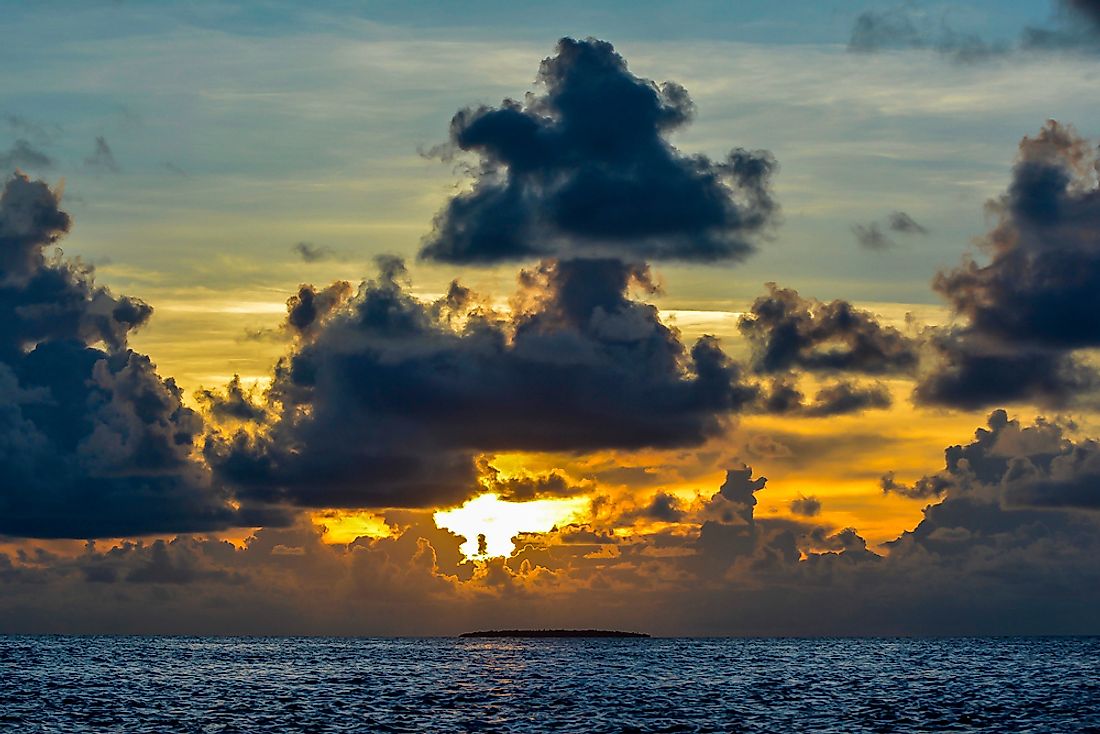Biggest Islands And Atolls In Tuvalu

Tuvalu is an independent constitutional monarchy consisting of a group of nine scattered coral atolls. Tuvalu has a total area of around 10 square miles, making it the world's fourth smallest country by land area. It has a population of 11,636 people as of 2005. Funafuti is an atoll housing the national capital of the same name, and more than half of Tuvalu's population. Nukufetau Island provides sites for ship docking. The island of Naumea has a fresh water pond. Subsistence farming and fishing are the island's economic activities. Here are the biggest islands and atolls in Tuvalu.
Funafuti
Funafuti is the coral atoll that serves as the home of the capital of Tuvalu. The main islet is Fongafale where Vaiaku, the country's capital, is located. The atoll has 30 islets that can anchor ships. As a result, a US military base was established during the WWII to combat the Japanese forces sailing in the Pacific. The atoll is the most populated region of Tuvalu with a population of 6,025 people. The primary economic activity of the people is subsistence fishing. The 21st Century urbanization and increased salinization of the soil reduced the agricultural productivity of the atoll which used to produce bananas and papaya. Apart from government offices, Vaiaku also has a hospital, a hotel, and Funafuti International Airport. The island is 277 square kilometers. The area provides nesting sites for the faulopa and green sea turtles, provides breeding sites for the black noddy colony. The Funafuti Conservation Area protects marine and land-based biodiversity alike, including corals, fish, algae, and invertebrates.
Nukufetau
Nakufetau atoll has many islets, 33 of them in total, all surrounding a central lagoon. The entire island occupies an area of 145 square kilometers. It has many passages that allow large ships to dock and enter the lagoon. The biggest island on the atoll is Motulalo. People used to live on Fale Island but after the missionaries' era, they migrated to Savave near the Fale settlement. The first settlers, the Tongans, used to plant coconut trees on Fake Island. Similar to the case in Funafuti, the US established a Coast Guard base on the island. An airfield was also constructed during the war. After the wars, the field was demolished but due to the compaction of the ground to make a runway, the soil was ruined and could no longer support the growth of coconuts. In March 2015, the Cyclone Pam hit the island destroying houses, infrastructure, and crops.
Nukulaelae
The atoll of Nukulaelae is 43 square kilometers and has a population of approximately 324 as per the 2012 census. It has at least 15 islets with Pepesala being the most populous with 247 people in 2012. The name Nukulaelae means a land of sands, and the original settlers found no trees on the island. Later on, coconut trees were introduced. The island houses the Nukulaelae Conservation Area in the eastern end of the lagoon. In 1861, Elikana a Christian docked in the island after being caught in a storm. By 1862-3, Peruvian ships engaging in the blackbirding trade came to the island looking for slave traders to work in the Peru plantations and mine the Guano mines in the Chincha Islands. By 1863 the island had a population of 100 people.
Nui
Nui is another atoll in the island nation of Tuvalu. The island has an area of 17 square kilometers and a population of 542 as per 2012 census. The island has at least 21 islets with Fenua Tapu as the biggest. The Alamoni islet is the most populous with 321 people. When the Europeans discovered the small island, the area was full of palm trees. They found the natives naked and the island having a large fishery but they were unable to dock that night, and when the storm blew them off, they did not return to the island. The major festival in the island is February 16 to commemorate the 1882 Tsunami. In 2015, the cyclone Pam pushed storm surges to the area causing extensive damage to crops, houses, and infrastructure.
Tuvalu's Environmental Challenges
Tuvalu records no international territorial disputes. In 2015, the state of Tuvalu joined forces with other Pacific Island nations to fight invasive species in an effort to protect the environment of the region, their communities, and the economic aspirations of their people. The significant environmental threat facing the islands and other islands in the Pacific is the water dispersed by docking ships when taking cargo. The people fear that the discharged water may contain living organisms that survive and spread. An example of this concern is the brown algae, a new species, spreading throughout the island of Funafuti.
Biggest Islands And Atolls In Tuvalu
| Rank | Biggest Islands And Atolls In Tuvalu | Total Area (including Inner Lagoon in Atolls) |
|---|---|---|
| 1 | Funafuti | 277 square kilometers |
| 2 | Nukufetau | 145 square kilometers |
| 3 | Nukulaelae | 43 square kilometers |
| 4 | Nanumea | 22 square kilometers |
| 5 | Nui | 17 square kilometers |
| 6 | Vaitupu | 10 square kilometers |
| 7 | Nanumanga | 3.0 square kilometers |
| 8 | Niutao | 2.5 square kilometers |
| 9 | Niulakita | 0.4 square kilometers |







